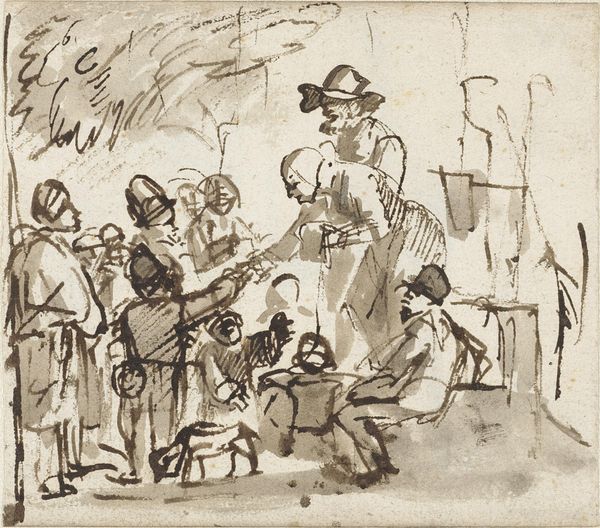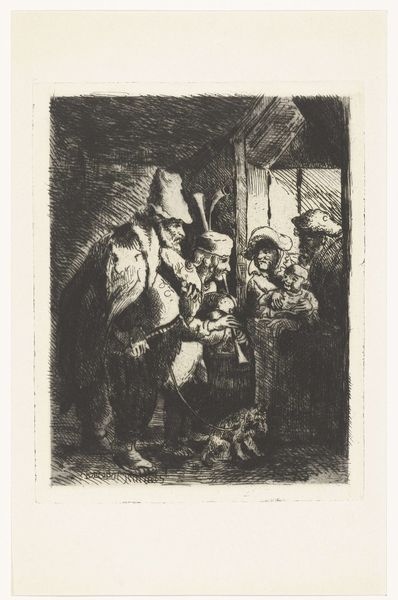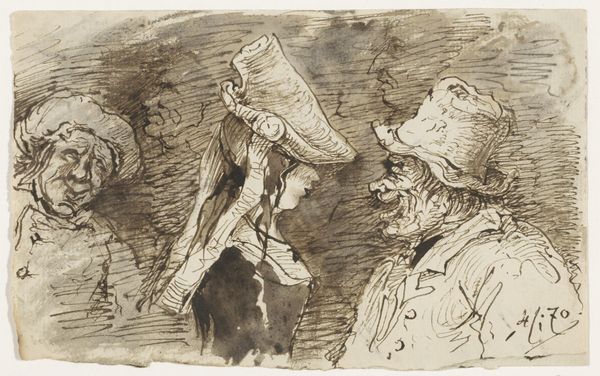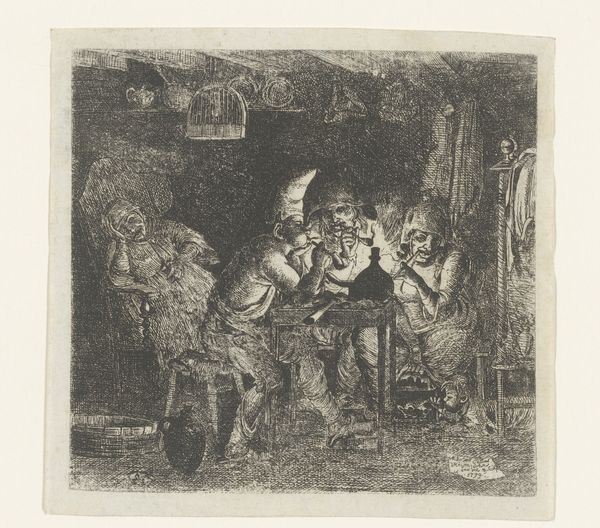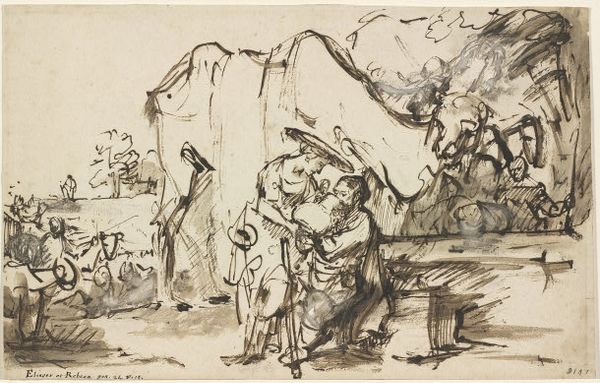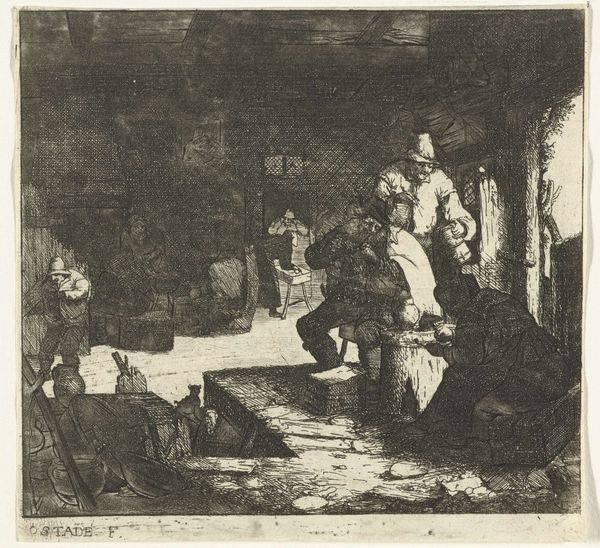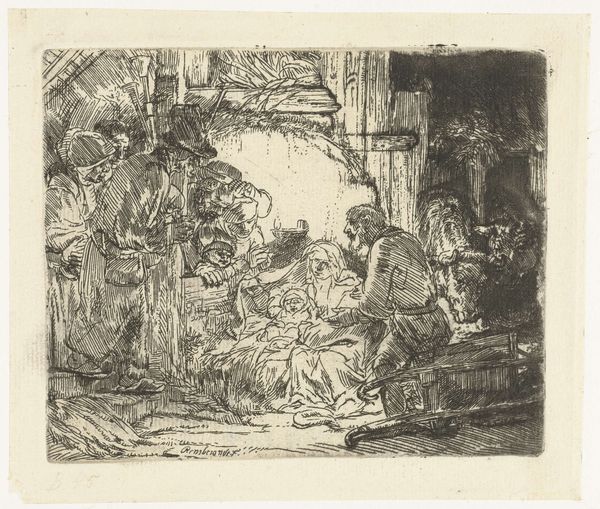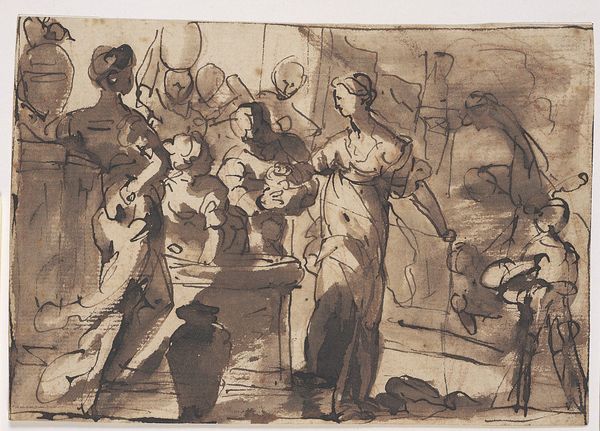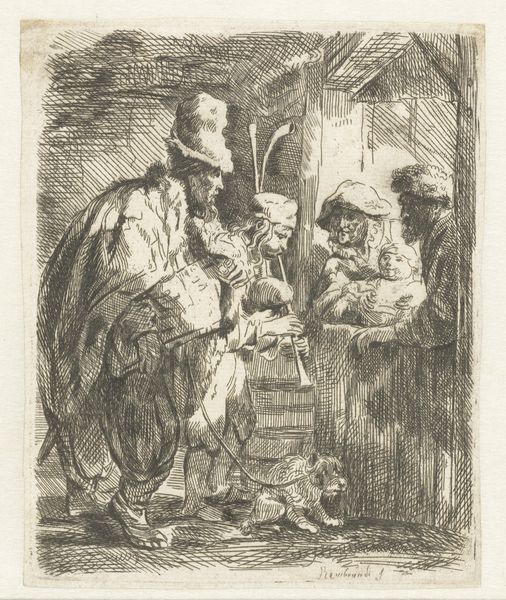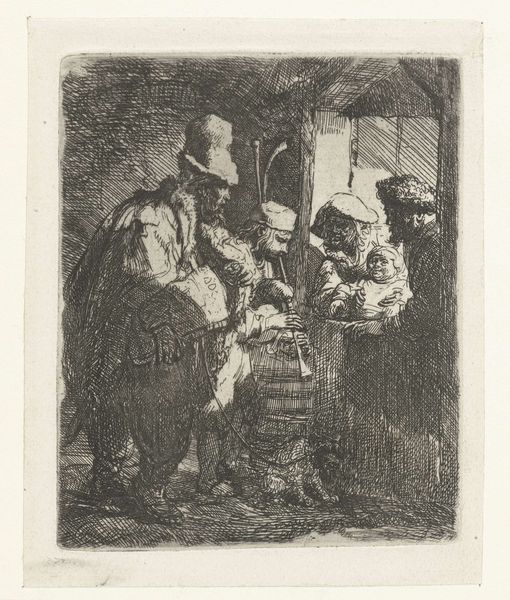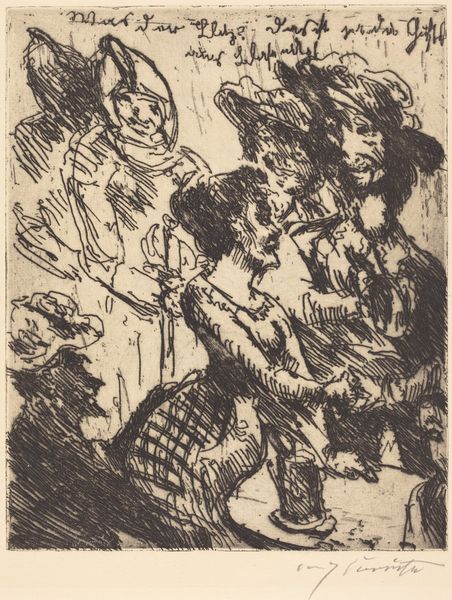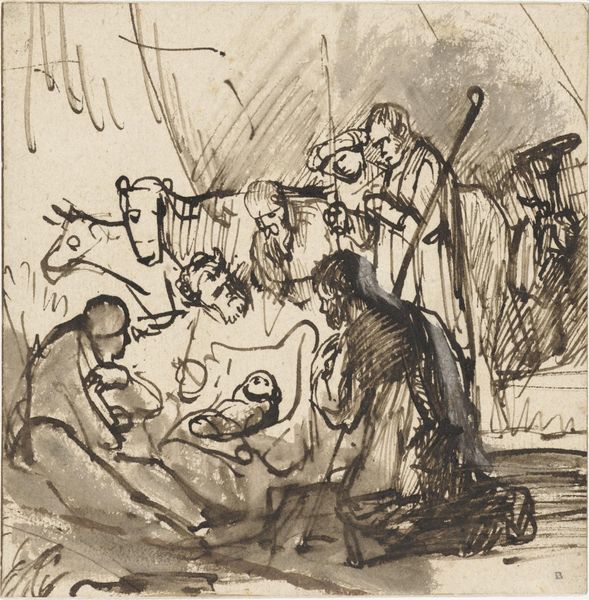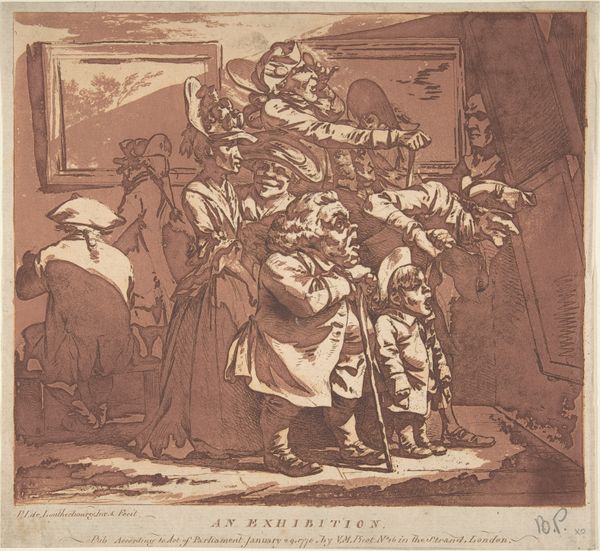
Kinderen rondom het vuur van een kastanjeverkoper (?) 1802 - 1845
0:00
0:00
drawing, ink, pen
#
portrait
#
drawing
#
caricature
#
pencil sketch
#
caricature
#
ink
#
character sketch
#
romanticism
#
pen
#
watercolour illustration
#
genre-painting
Dimensions: height 115 mm, width 118 mm
Copyright: Rijks Museum: Open Domain
Editor: This is "Children Around the Fire of a Chestnut Seller(?)" by Nicolas Toussaint Charlet, created sometime between 1802 and 1845, and it's at the Rijksmuseum. It’s a pen and ink drawing that's mostly sepia tones, giving it a sense of warmth and also of times long past. What do you see in this piece that stands out? Curator: I'm drawn to how the fire, though not explicitly depicted, is central. Light and warmth around a communal fire is an ancient human symbol - drawing people together, creating a safe haven, nourishing both body and spirit with cooked food. Editor: That makes sense, given how huddled together the children seem. Curator: Exactly! Think about what chestnuts themselves might symbolize. They are harvested in the autumn, a time of transition, but they offer sustenance through the winter. Is Charlet hinting at a deeper narrative here? The chestnut seller is centered, looking outwards towards us with intense stare; does this imply watchfulness and duty? What does the cluster of young souls remind you of? Editor: There's a kind of vulnerability, a need for protection and a reminder of simpler times... a sense of shared experience around the chestnut seller, that feels comforting. It makes me consider that images have staying power across different social contexts. Curator: Precisely. These simple scenes often encapsulate profound elements of the human story and the basic requirements of food and fire to draw out common humanity across the ages. Editor: It is amazing how simple images and elements, like a fire and food, can take on these symbolic and metaphorical connections, connecting back to cultural heritage and broader concepts that stretch beyond the surface. Thanks! Curator: It’s been a pleasure, and the symbolic interpretation certainly brings another lens to looking at art!
Comments
No comments
Be the first to comment and join the conversation on the ultimate creative platform.
